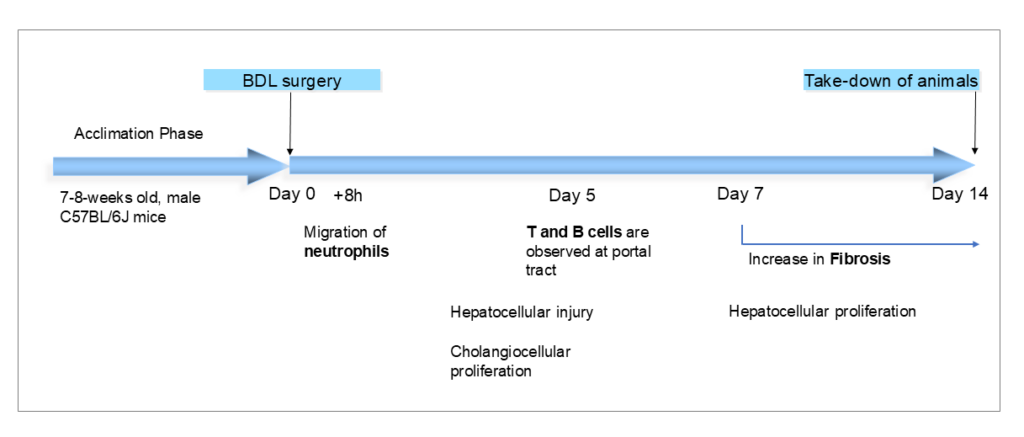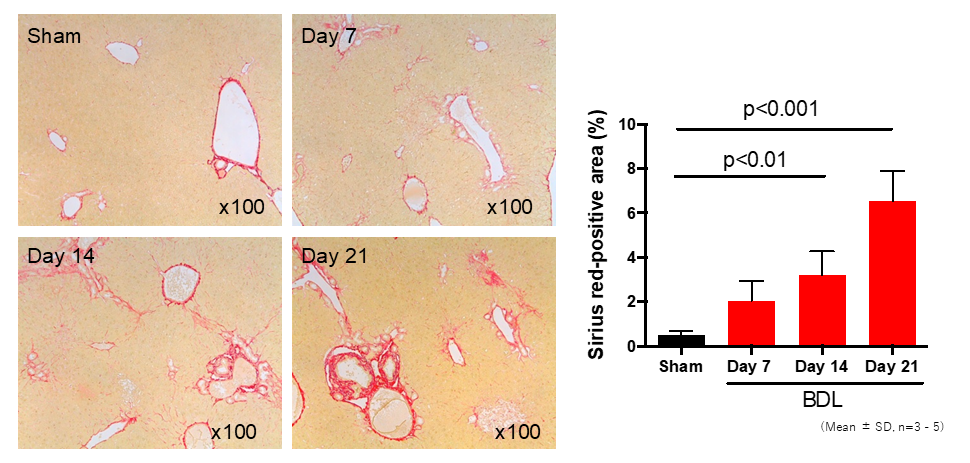MODEL LINEUP
BDL model (Bile duct ligation)
The BDL Model
The BDL model (Bile Duct Ligation) is created by as surgical procedure in which the bile duct in the mouse is blocked. This blockage leads to disruption in the bile flow and a rapid onset of a cholestasis-like state that is comparable to human primary biliary cholangitis (PBS) and primary sclerotic cholangitis (PSC). It is a well-established model to evaluate the pharmacological efficacy of new drug compounds for these indications in the field of liver diseases.
Alternatively, we are also offering the DDC model that shows a slightly milder fibrosis phenotype to evaluate new drug candidates indicated against cholangitis.
How we create the BDL model
The BDL model is based on male C57BL/6J mice that are 7-8 weeks old and the pathology is induced through a surgical procedure in which the bile duct is ligated.

The model shows characteristics such as migration of neutrophiles in to the liver, injury to the hepatocytes and cholangiocellular proliferation in the initial phase after surgery. In the later phases, the model shows hepatocellular proliferation, an influx of B- and T-cells as well as an increase in collagen deposition (fibrosis) around the portal vein.
Analysis items & Key endpoints
Histopathological analysis
Sirius Red staining
Immunohistopathological stainings (IHC)
Biochemistry analysis
ALT
Total Bilirubin level
Liver hydroxyproline content etc.
Gene expression analysis
Collagen Type 1
α-SMA
MCP-1
TIMP-1 etc.
Other parameters
Survival rate

Contact us
For any questions or if you would like to receive more information about the BDL model especially in comparison to the DDC model, please reach out to us using the contact button below.
We are happy to help you create the best study for your project!
